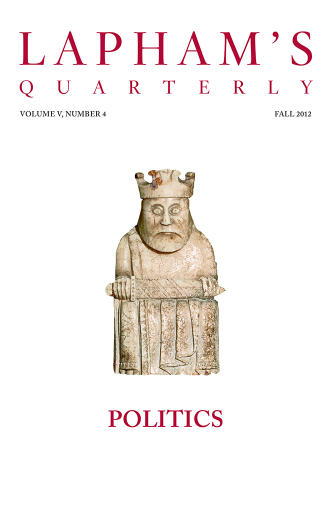The first person to discover an art of memory is said to have been Simonides, of whom the following well-known story is told.
He had written an ode of the kind usually composed in honor of victorious athletes, to celebrate the achievement of one who had gained the crown for boxing. Part of the sum for which he had contracted was refused him on the ground that, following the common practice of poets, he had introduced a digression in praise of Castor and Pollux, and he was told that in view of what he had done, he had best ask for the rest of the sum due from those whose deeds he had extolled. And according to the story, they paid their debt. For when a great banquet was given in honor of the boxer’s success, Simonides was summoned forth from the feast by a message to the effect that two youths who had ridden to the door urgently desired his presence. He found no trace of them, but what followed proved to him that the gods had shown their gratitude. For he had scarcely crossed the threshold on his way out when the banqueting hall fell in upon the heads of the guests and wrought such havoc among them that the relatives of the dead who came to seek the bodies for burial were unable to distinguish not merely the faces but even the limbs of the dead. Then it is said Simonides, who remembered the order in which the guests had been sitting, succeeded in restoring to each man his own dead.
This achievement of Simonides appears to have given rise to the observation that it is an assistance to the memory if localities are sharply impressed upon the mind, a view the truth of which everyone may realize by practical experiment. For when we return to a place after considerable absence, we not merely recognize the place itself but remember things that we did there and recall the persons whom we met and even the unuttered thoughts that passed through our minds when we were there before. Thus, as in most cases, art originates in experiment. Some place is chosen of the largest possible extent and characterized by the utmost possible variety, such as a spacious house divided into a number of rooms. Everything of note therein is carefully committed to the memory, in order that the thought may be enabled to run through all the details without let or hindrance. And undoubtedly the first task is to secure that there shall be no delay in finding any single detail, since an idea which is to lead by association to some other idea requires to be fixed in the mind with more than ordinary certitude. The next step is to distinguish something that has been written down or merely thought of by some particular symbol which will serve to jog the memory. This symbol may have reference to the subject as a whole. It may, for example, be drawn from navigation, warfare, etc., or it may, on the other hand, be found in some particular word. (For even in cases of forgetfulness, one single word will serve to restore the memory.)
However, let us suppose that the symbol is drawn from navigation, as for instance an anchor, or from warfare, as for example some weapon. These symbols are then arranged as follows. The first thought is placed, as it were, in the forecourt; the second, let us say, in the living room; the remainder are placed in due order all round the impluvium and entrusted not merely to bedrooms and parlors but even to the care of statues and the like. This done, as soon as the memory of the facts requires to be revived, all these places are visited in turn, and the various deposits are demanded from their custodians, as the sight of each recalls the respective details. Consequently, however large the number of these that it is required to remember, all are linked one to the other like dancers hand in hand.
From Institutes of Oratory. The first teacher of rhetoric guaranteed a salary by the Roman state, Quintilian counted among his students Pliny the Younger, two great-nephews of the emperor Domitian, and, according to some sources, the historian Tacitus. The mnemonic system invented by the sixth-century-bc poet Simonides of Ceos is known as the method of loci, or the memory palace. Explaining the concept to Watson in Arthur Conan Doyle’s 1887 A Study in Scarlet, Sherlock Holmes compares the human mind to a “brain attic” that must be periodically cleared out to prevent “useless facts elbowing out the useful ones.”
Back to Issue

